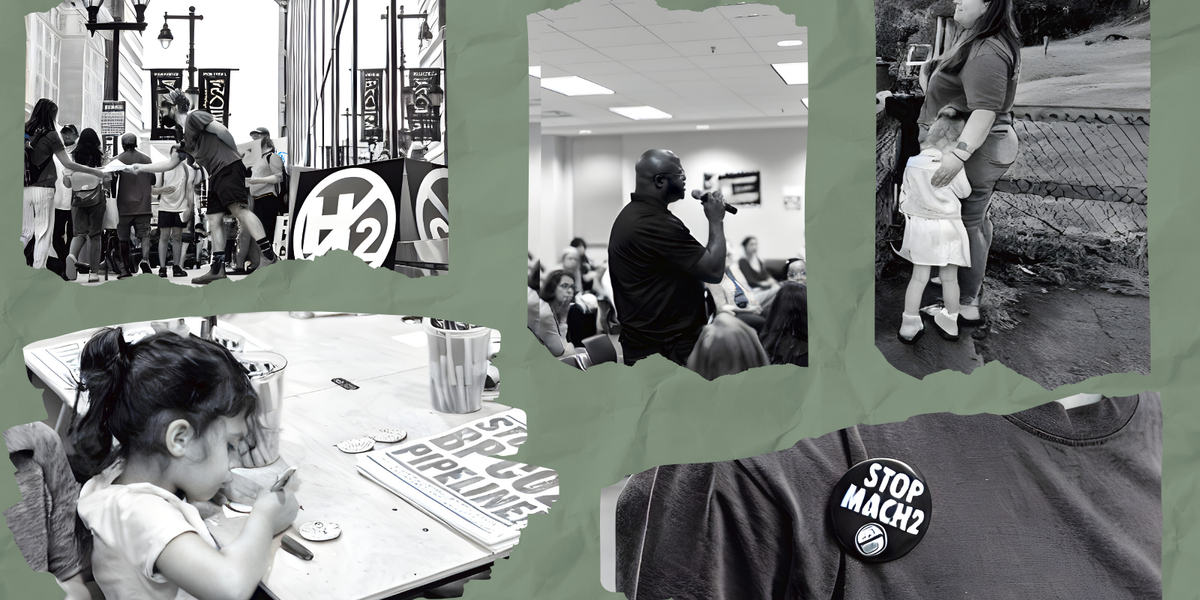saudi arabia
Extreme heat during Hajj exposes vulnerability of unregistered pilgrims
A deadly heatwave during the Hajj pilgrimage in Saudi Arabia resulted in many deaths, predominantly among unregistered pilgrims who lacked access to cooling facilities.
Susannah George, Heba Farouk Mahfouz, and Samuel Oakford report for The Washington Post.
In short:
- Temperatures in Mecca exceeded 125°F, causing over 1,300 deaths, mostly among unregistered pilgrims.
- Unregistered pilgrims, often swindled by unofficial travel agents, faced denial of access to cooling centers.
- Saudi efforts to mitigate heat, such as surface-cooling coatings and misting systems, proved insufficient.
Key quote:
"I can’t breathe and I feel like I’m going to get sunstroke while sitting in the tent. I don’t know where to go."
— Ahmad Bahaa, Egyptian pilgrim
Why this matters:
This disaster is a stark reminder of the escalating impact of climate change on global health and safety. Extreme heat events are becoming more frequent and intense, posing severe risks, particularly in regions accustomed to high temperatures but not prepared for such extremes. For Saudi Arabia, a country that has traditionally handled large crowds during the Hajj, the incident calls for a reassessment of strategies to manage environmental hazards and ensure the safety of all pilgrims.
Pilgrims in Saudi Arabia die during Hajj amid intense heat
Hundreds of pilgrims died during this year's Hajj in Saudi Arabia due to extreme heat, with officials remaining silent on the death toll and causes.
In short:
- Pilgrims faced temperatures up to 117°F, causing many to collapse and some to die.
- Families struggled to locate missing loved ones at a medical complex in Mecca.
- Saudi Arabia has invested heavily in safety, but climate change may increase future risks.
Key quote:
“. . . saw a lot of people collapsing to the ground unconscious.”
— Khalid Bashir Bazaz, Indian pilgrim
Why this matters:
The scorching temperatures, made worse by the ongoing global climate crisis, have transformed the spiritual undertaking into a life-threatening ordeal. With millions of faithful traveling to Mecca each year, the risks associated with extreme weather events are becoming increasingly clear.
Saudi Arabia moves toward renewable energy sources
Despite its vast oil reserves, Saudi Arabia is increasingly investing in renewable energy like solar and wind to balance its energy needs and reduce carbon emissions.
In short:
- Saudi Arabia aims to generate 50% of its energy from renewable sources by 2030, focusing on large-scale solar and wind projects.
- Aramco is diversifying its energy portfolio by investing in solar power and technologies to reduce carbon emissions.
- The kingdom’s rapid renewable energy expansion is supported by abundant capital and streamlined project approvals.
Key quote:
“The volumes you see here, you don’t see anywhere else, only in China.”
— Marco Arcelli, CEO of Acwa Power
Why this matters:
Saudi Arabia's shift toward renewable energy reflects global pressures to address climate change and signals significant economic diversification. This transition could serve as a model for other oil-dependent economies looking to adopt more sustainable energy practices.
Related EHN coverage:
| BigStock Photo ID: 261340198 |
| Copyright: Anton_Medvedev |
Saudi Arabia focuses on emissions from wind and solar over oil
Revealed: Saudi Arabia’s grand plan to ‘hook’ poor countries on oil
Climate scientists say fossil fuel use needs to fall rapidly – but oil-rich kingdom is working to drive up demand.
Oil prices jump on extension of production cuts by Saudi Arabia and Russia
The remarkable story of how Yemen’s oil tanker disaster was averted by crowdfunding
When civil war broke out in 2015, a leaky oil tanker in the Red Sea became a crisis point – triggering a nail-biting series of events that saw special negotiations between the Houthi rebels and Saudi-backed government, and the UN begging the public for help – and getting it from a bunch of US schoolchildren.



















